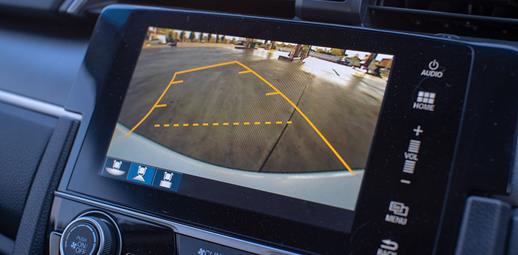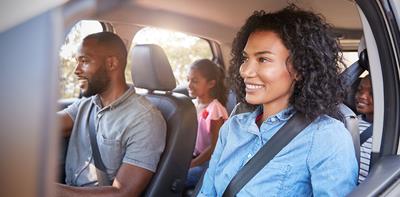
If you’re planning on shopping for a new car, prepare to be amazed by the range of technology that can be found in some of the latest models.
That includes some useful technology to help you park your car safely and securely. Here’s some of the tech that can make your life a little bit easier behind the wheel.
Parking sensors
Originally developed in the 1970s as an aid for blind people, it wasn’t until 2003 that parking sensors first found their way into mass-market vehicles. The Toyota Prius was the first commonly available car to feature sensors in its bumpers.
The ultrasonic sensors judge distances by bouncing sound off objects, such as the kerb or other vehicles. The driver hears successive beeps, which become more frequent the closer you are to the object. Be sure to stop when the sound becomes constant.
In more modern cars, this may also be supplemented by an image on the dashboard, showing exactly how much distance you have left.
Reversing cameras
Another technology that’s been around for a surprisingly long time, reversing cameras were first developed in the 1950s, but weren’t widely available until Nissan launched the Infiniti Q45 in 2000.
A reversing camera does what it says on the tin. A back-mounted camera sends a video to the display on the dashboard, giving the driver full view of what’s behind. There are often lines superimposed to guide you into the parking space.
This can take a little getting used to, as the car appears to turn in the opposite direction from what you might expect. But once you’ve got into the swing of things, you’ll never look back.
360° cameras
With 360° cameras, multiple cameras are used for a surround view of what’s going on around the car. The images are ‘stitched’ together to get a full panorama, and you usually get a top-down bird’s-eye view too.
Park assist
Park assist systems were introduced in 2003, and have come on in leaps and bounds since then, which is great news for those drivers who aren’t so keen on parallel parking.
Active parking assist technology works by using sensors, cameras and increasingly smart software. Most modern systems can recognise road markings, and help you pick a suitable space to park in. They can help both with parallel parking and manoeuvring into a parking bay.
The driver retains control of the pedals but lets go of the steering wheel. When safely in place, the car will alert the driver. If the driver wants to stop the manoeuvre while it’s in progress, they can either brake fully or take control of the steering wheel.
If you buy a Ford Fiesta Vignale or Titanium, for example, you can pay extra for the Advanced Auto Park Assistance Pack. Not only will this steer into a space for you, but it can help pull your car out of it too – which is particularly useful if you’ve been tightly sandwiched by other vehicles in your absence.
Fully automated parking systems
Park assist is a semi-automated system, but some cars go a step further with fully automated systems. This means the steering, acceleration, braking and gear changes will all be performed by the car. It might even put on the handbrake for you.
For example, with the Nissan Leaf ProPilot system, parking can be performed entirely by the vehicle. You just hold down a self-park button near the gearstick, and the car does all the work.
This technology, and what it is capable of, is rapidly evolving. With the Tesla Model S, you can get out of the car first, and drive it up to 12 metres using a fob - into your garage, for instance.
Don’t get out of practice
As wonderful as this parking technology is, it’s a good idea not to become totally reliant on it. Remember to exercise your own judgment and stay on top of your parking and driving skills, just in case you have to go back to parking yourself.
For more tips on driving and road safety, go to Solved.
You can find out more about our car insurance here.


